Types of Substrates in Hydroponics

Hello to all gardeners! How are you? Today I come to talk to you about the most used hydroponic substrates for our plants .
What is hydroponics?
The word hydroponics comes from the Greek: hydro (water) and ponos (labor). This method is based on replacing the soil with substrates (although they do not need to be present). Water is used as a transport element to give the plant the nutrient solution it needs. This means that we are facing a method that does not require many resources and that is very sustainable, since we can control the nutrition of our plant at all times.
However, even if we think that hydroponics is a current invention … it is not like that. The Aztecs , many years ago, were the first human generation to use hydroponic agriculture efficiently. Also, it is said that one of the seven wonders of the world, the Hanging Gardens of Babylon were irrigated from the roof.

Properties of a substrate
We know by the name of substrate, the material that we use in the culture container and that, in a way, is the one that replaces the soil. It is, therefore, the medium that allows the fixation of the plant, where it will develop and obtain all the necessary nutrients.
The main characteristics of what would be the « ideal substrate » are:
- Retain moisture
- Good aeration
- Physical and chemical stability
- Chemically inert
- Free of pathogens
- Good drainage
- Adequate capillarity
- Light
- Low cost
The porosity in the substrates is very important since depending on the crop we will need more or less. In the case of azaleas, orchids or begonias a very high porosity is required. On the contrary, in the case of the carnation, the geranium, the rose or the gladiolus, the porosity has to be low for its correct development.
The hydroponic system encompasses both substrate and non-substrate crops. We will explain both cases below.
Main substrates in hydroponics
There are different types of substrates in hydroponics. Although some terms are a bit new to us, I will try to make it as clear as possible.
The substrates that are currently used the most are:
Perlite
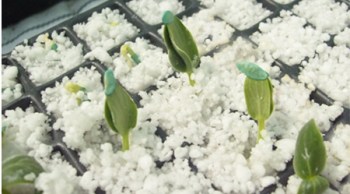
The pearlite, as you can see in the photo, has a grainy appearance (0.5-5mm), white in color. It is a natural volcanic mineral, industrially processed at high temperatures. It has high porosity, so it is sometimes mixed with other substrates to improve the porosity of the other. It weighs very little and is very fragile. It is an inert substrate.
This means that the plant could not develop in the perlite if we did not add the nutrient solution dissolved in the water (that is, the plant does not obtain any nutrient from the perlite). Therefore, the perlite will provide the plant with sustenance, hydration and will support the nutrient solution.
Its installation method is very simple:
- Place the bags in the desired places.
- Open the holes for planting and watering.
- A saturation irrigation is applied.
- Open points for the water to drain.
- Moistening
I leave you the link of a video of how peppers are grown in perlite .
Rock Wool
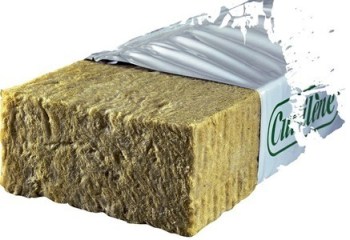
Rock wool is a substrate of basaltic and calcareous material, processed at high temperatures and the molten product is transformed into fibers and pressed. Like perlite, it is an inert substrate, with a low density and a homogeneous structure. It will allow us to have an easy management of irrigation and nutrition.
I leave you the link of a video where you can see how to grow tomatoes in rockwool .
Coconut fiber
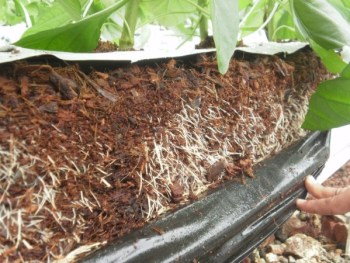
Coconut fiber is one of the substrates in hydroponics, along with perlite and rock wool, most used. It is a natural material, made up of lignin and cellulose from coconut. It is considered an organic substrate, with high porosity and good drainage. It also has a high water retention capacity. Due to all these characteristics, and because it is very light, it is recommended to use it in urban gardens.
Rice husk
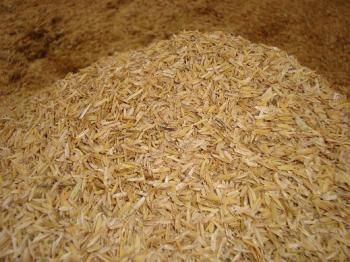
Rice husk is used in areas where rice production is abundant. Like the others, it has a good structure and porosity to cultivate.
Hydroponics without substrate
Hydroponic crops are also considered those that do not have a substrate. That is, they simply require a certain structure and nutrient solution. One of the systems that are currently being used in hydroponics without substrate is the NGS (New Growing System) system. In the next articles I will go more in depth about these novel cultivation methods.
NGS system
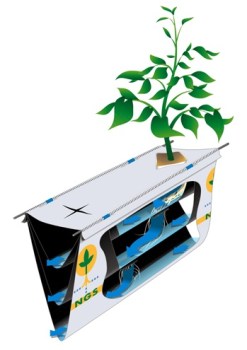
I hope you liked the article and that, as always, you tell us about your experiences in the comments. The truth is that the world of hydroponics is very interesting and allows great advances such as being able to cultivate in places whose soils are not suitable for it
Have a nice day!

![Photo of Rhizome: [Concept, Types and Examples]](https://www.complete-gardening.com/wp-content/uploads/2022/08/rhizome-concept-types-and-examples-390x220.jpg)
![Photo of Potato Beetle: [Identification, Elimination and Prevention]](https://www.complete-gardening.com/wp-content/uploads/2022/08/potato-beetle-identification-elimination-and-prevention-390x220.jpg)
![Photo of 25 Fast Growing Plants: [Types, Characteristics and Images]](https://www.complete-gardening.com/wp-content/uploads/2022/08/25-fast-growing-plants-types-characteristics-and-images-390x220.jpg)
![Photo of Stipa Tenacissima or Esparto grass: [Planting, Care, Irrigation, Substrate]](https://www.complete-gardening.com/wp-content/uploads/2022/08/stipa-tenacissima-or-esparto-grass-planting-care-irrigation-substrate-390x220.jpg)